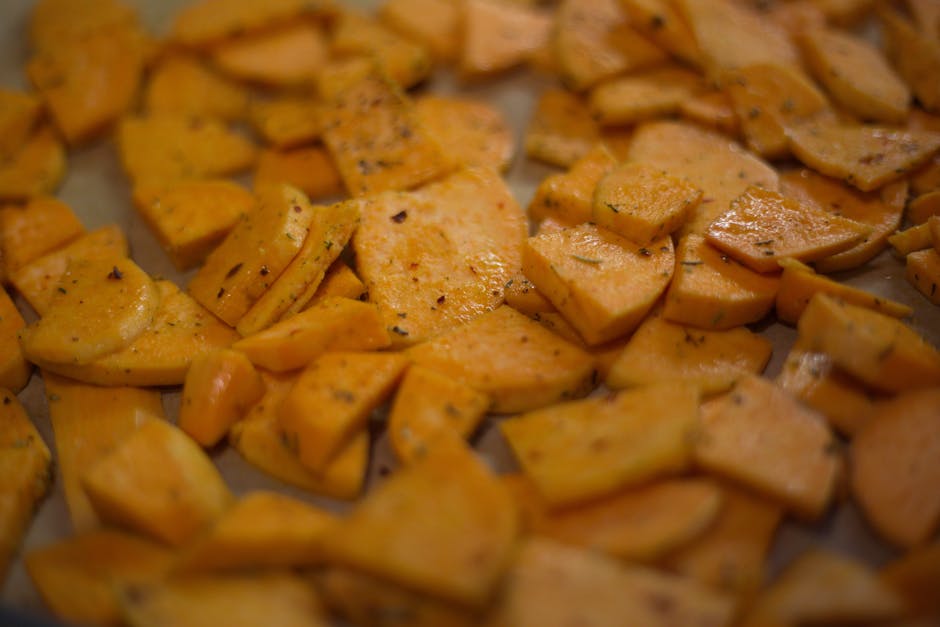Prepare to embark on a culinary journey with our Classic Chicken Caesar Salad recipe, a dish whose history is as captivating as its taste. While its exact origins remain shrouded in some mystery, most culinary historians agree that the Caesar salad, in its recognizable form, was born in Tijuana, Mexico, in the 1920s. The legendary story credits Caesar Cardini, an Italian-American restaurateur, with its creation. Legend says he whipped up the salad during a Fourth of July celebration when he was unexpectedly short on ingredients, improvising with what he had available and creating a culinary masterpiece.
The initial Caesar salad likely differed significantly from the versions we know today. Early recipes were simpler, often lacking the now-ubiquitous croutons and sometimes even the chicken. The addition of chicken, in fact, became popular much later, solidifying its place as a hearty and satisfying meal. The salad’s popularity exploded in the United States during the mid-20th century, becoming a staple on restaurant menus and a beloved home-cooked meal. Its simple yet elegant combination of romaine lettuce, creamy dressing, parmesan cheese, and croutons struck a chord with diners, and its versatility allowed for countless adaptations.
Today, the Caesar salad’s cultural significance is undeniable. It’s estimated that billions of Caesar salads are consumed globally each year. It’s a ubiquitous presence on menus worldwide, often appearing in slightly varied iterations to cater to local tastes and preferences. Its popularity transcends geographical boundaries and cultural differences, serving as a testament to its universal appeal. Beyond its simple ingredients, the Caesar salad’s enduring popularity speaks to our desire for a balanced, flavorful, and relatively quick meal. Whether you’re a seasoned chef or a kitchen novice, this recipe allows you to experience the timeless charm of a culinary classic, a dish that continues to captivate taste buds across generations.
Ingredients and Measurements
This Classic Chicken Caesar Salad recipe yields approximately 4 generous servings. The ingredient quantities can be easily adjusted to suit your needs, simply multiply or divide accordingly. Accuracy in measurements is crucial for achieving the perfect balance of flavors and textures. Using a kitchen scale for weighing ingredients, especially for the cheese and croutons, will ensure consistency in your results.
For the Chicken:
- 1.5 lbs boneless, skinless chicken breasts (approximately 2 large breasts): Choose high-quality chicken for optimal flavor. Ensure the chicken is completely thawed before cooking to prevent uneven cooking.
- 1 tbsp olive oil: Use extra virgin olive oil for the best flavor.
- 1 tsp salt:
- 1/2 tsp black pepper:
- 1/2 tsp garlic powder:
- 1/4 tsp paprika (optional, for color and a subtle smoky flavor):
For the Caesar Dressing:
- 1/2 cup mayonnaise: Use a good quality mayonnaise, preferably one with a higher fat content for a richer, creamier dressing.
- 1/4 cup grated Parmesan cheese: Freshly grated Parmesan cheese provides the best flavor and texture. Avoid pre-grated cheese as it often contains cellulose which can affect the texture of the dressing.
- 2 cloves garlic, minced: Fresh garlic provides the best flavor. For a milder garlic flavor, use 1 clove instead.
- 2 tbsp lemon juice: Freshly squeezed lemon juice is recommended for the brightest flavor. Avoid using bottled lemon juice as it often contains preservatives.
- 1 tbsp Worcestershire sauce: Adds a savory depth of flavor. Adjust to your preference.
- 1 tsp Dijon mustard: Adds a tangy kick to the dressing.
- 1/2 tsp salt:
- 1/4 tsp black pepper:
For the Salad:
- 1 large head romaine lettuce, chopped: Wash the lettuce thoroughly and pat it completely dry before assembling the salad to prevent a watery salad.
- 1 cup croutons: Homemade croutons are highly recommended, but store-bought are acceptable. Aim for about 1/2 inch cubes for optimal texture.
- 1/4 cup extra grated Parmesan cheese, for garnish:
Note: All measurements are approximate. Adjust quantities to your liking. Remember to taste and adjust seasonings as needed throughout the cooking process.
Equipment List
Preparing a Classic Chicken Caesar Salad requires a selection of kitchen tools to ensure efficient and safe food handling and optimal results. This list details the necessary equipment, including recommended sizes and materials for best performance.
Large Mixing Bowls (2): You’ll need at least two large mixing bowls, preferably stainless steel or glass. One (approximately 8-quart capacity) will be used for tossing the salad, while the second (around 4-quart capacity) is ideal for preparing the chicken and dressing separately. Avoid using reactive materials like aluminum, which can affect the flavor of the dressing.
Chef’s Knife (8-inch): A sharp 8-inch chef’s knife is essential for efficiently dicing the chicken breast and chopping the romaine lettuce. A dull knife is dangerous and will lead to uneven cuts. Regular sharpening is crucial for maintaining its effectiveness and safety.
Cutting Board: Use a large cutting board made of durable material like wood or high-quality plastic. Avoid using glass cutting boards as they can dull your knives quickly. Ensure the cutting board is clean and sanitized before use.
Whisk: A sturdy whisk is needed for emulsifying the Caesar dressing. A balloon whisk is preferred for its efficiency in incorporating air and creating a smooth, creamy texture. A fork will not achieve the same consistency.
Large Skillet (10-12 inch): A 10-12 inch non-stick skillet is best for cooking the chicken. Non-stick prevents sticking and allows for easier cleanup. Ensure the skillet is appropriately sized to avoid overcrowding, which can lead to steaming instead of browning the chicken.
Measuring Cups and Spoons: Accurate measurements are vital for the perfect dressing. Use a set of standard measuring cups and spoons to ensure consistency in your recipe. Invest in a good quality set for accurate volume measurements.
Serving Bowl or Platter: Choose a large serving bowl or platter to showcase your beautifully prepared Caesar salad. The size should comfortably accommodate the entire salad without overcrowding. Consider the aesthetic appeal of your serving dish to enhance the presentation.
Tongs or Salad Servers: Tongs or salad servers are recommended for gently tossing the salad and serving. These tools prevent the salad from being crushed or over-handled. Avoid using your hands to toss the salad to maintain hygiene.
Optional: Food Processor (for croutons): While not strictly necessary, a food processor can simplify the crouton-making process. If you choose to make croutons from scratch, a food processor will efficiently dice and toast the bread cubes.
Chicken Preparation (including cooking time and temperature)
This section details the preparation of the grilled chicken breast, a crucial component of our Classic Chicken Caesar Salad. We’ll be focusing on achieving perfectly cooked, juicy chicken that complements the other flavors in the salad.
Begin with two boneless, skinless chicken breasts, approximately 6 ounces each. Pat them thoroughly dry with paper towels. This step is vital for achieving a good sear and preventing the chicken from steaming instead of grilling. Excess moisture hinders browning and can result in a less flavorful chicken.
Next, season generously. For optimal flavor, use a combination of spices. I recommend 1 teaspoon of garlic powder, ½ teaspoon of onion powder, ½ teaspoon of paprika, ¼ teaspoon of black pepper, and a pinch of salt per chicken breast. Rub the seasoning mixture evenly over both sides of the chicken, ensuring full coverage. Let the chicken sit at room temperature for about 15-20 minutes to allow the seasoning to penetrate and slightly warm the meat. This will contribute to more even cooking.
For grilling, preheat your grill to medium-high heat (approximately 375-400°F). Place the chicken breasts on the preheated grill grates. Avoid overcrowding the grill; leave some space between the breasts for even cooking and good sear marks.
Grill the chicken for approximately 5-7 minutes per side, or until the internal temperature reaches 165°F (74°C). Use a meat thermometer to ensure accuracy. The chicken should be firm to the touch and the juices should run clear when pierced with a fork. If you prefer a more charred exterior, you can increase the grilling time slightly, but closely monitor the internal temperature to prevent overcooking.
Important Note: Cooking times may vary depending on the thickness of your chicken breasts and the heat of your grill. Always use a meat thermometer to ensure the chicken is cooked through to a safe internal temperature. Overcooked chicken will be dry and tough, so it’s crucial to monitor the cooking process closely.
Once cooked, remove the chicken from the grill and let it rest for 5-10 minutes before slicing. This resting period allows the juices to redistribute throughout the meat, resulting in a more tender and flavorful final product. Slice the chicken against the grain into bite-sized pieces and add to your assembled Caesar Salad.
Crouton Preparation (including toasting method and preferred bread type)
The perfect crouton elevates a Caesar salad from good to exceptional. Achieving that ideal crunch and subtle toasty flavor requires careful attention to detail. We recommend using a crusty bread, such as a day-old baguette or a rustic Italian loaf. Day-old bread is ideal because it’s less likely to become soggy in the dressing. Avoid overly soft breads like sandwich bread, as they will likely crumble rather than crisp up.
Begin by preheating your oven to 350°F (175°C). This ensures even toasting throughout. Cut your chosen bread into roughly 1-inch cubes. Aim for uniformity in size for consistent toasting. Approximately 4 cups of cubed bread will suffice for a serving of 4-6 people. You can adjust this quantity based on your salad size and crouton preference.
In a large bowl, toss the bread cubes with 2 tablespoons of olive oil. Using a neutral-flavored olive oil is best, as you don’t want it to overpower the subtle flavors of the bread and the salad. Season generously with salt and freshly ground black pepper. About ½ teaspoon of each should be sufficient, but adjust to your taste.
Spread the seasoned bread cubes in a single layer on a baking sheet. Avoid overcrowding the pan, as this will result in steaming rather than toasting. Use two baking sheets if necessary to ensure even distribution. Bake for 10-15 minutes, or until the croutons are golden brown and crispy. Keep a close eye on them during the last few minutes to prevent burning.
For extra flavor, consider adding herbs to your croutons. A sprinkle of dried oregano, thyme, or rosemary before toasting adds a delightful aromatic complexity. Alternatively, you can brush the croutons with a little melted garlic butter after toasting for a richer flavor profile. Once cooked, remove the croutons from the oven and let them cool completely on a wire rack before adding them to your salad. This prevents them from becoming soggy from the residual heat.
Proper cooling is crucial. Allowing the croutons to cool completely ensures they retain their crispness when added to the salad. Store leftover croutons in an airtight container at room temperature for up to 2 days. They will likely lose some of their crispness after a day, but will still be enjoyable in the salad.
Caesar Dressing Preparation (including emulsification techniques)
The Caesar dressing is the heart and soul of this classic salad, and its creamy texture relies heavily on proper emulsification. This technique combines oil and water-based ingredients, which naturally repel each other, into a stable, smooth mixture. We’ll achieve this using a combination of whisking and a touch of mustard.
Ingredients:
- 1/4 cup mayonnaise (preferably high-quality, full-fat)
- 1/4 cup grated Parmesan cheese (freshly grated is best)
- 2 tablespoons extra virgin olive oil
- 1 tablespoon lemon juice (freshly squeezed is crucial)
- 1 clove garlic, minced
- 1 teaspoon Dijon mustard
- 1/2 teaspoon Worcestershire sauce
- 1/4 teaspoon black pepper
- Pinch of salt (adjust to taste)
Instructions:
Step 1: Combining the Emulsifier: Begin by combining the mayonnaise and Dijon mustard in a medium-sized bowl. The mustard acts as an emulsifier, helping the oil and water-based ingredients bind together. Whisk vigorously for about 30 seconds until well combined. This creates a stable base for the rest of the ingredients.
Step 2: Gradual Oil Addition: Slowly drizzle in the olive oil while whisking constantly. Adding the oil gradually is vital to prevent the dressing from separating. A steady hand and persistent whisking are key here. Continue whisking until the oil is fully incorporated and the mixture is smooth and creamy.
Step 3: Incorporating the Remaining Ingredients: Once the oil is emulsified, add the freshly squeezed lemon juice, minced garlic, Worcestershire sauce, Parmesan cheese, salt, and pepper. Whisk until all ingredients are thoroughly combined and the dressing is completely smooth. Taste and adjust seasoning as needed. You may want to add more lemon juice for acidity, salt for savoriness, or pepper for a spicier kick.
Step 4: Resting (Optional): For an even richer flavor, cover the bowl and refrigerate the dressing for at least 30 minutes before serving. This allows the flavors to meld together.
Professional Recommendations:
- Use high-quality ingredients: The flavor of your Caesar dressing will be directly impacted by the quality of your ingredients. Freshly grated Parmesan and good olive oil make a noticeable difference.
- Don’t over-emulsify: While thorough whisking is essential, excessive whisking can incorporate too much air, making the dressing less creamy.
- Taste and adjust: Everyone’s palate is different. Taste the dressing frequently and adjust the seasoning to your preference.
Following these steps and recommendations will ensure you create a truly delicious and perfectly emulsified Caesar dressing that will elevate your chicken Caesar salad to the next level.
Lettuce Preparation (including washing and drying)
Choosing the right lettuce is crucial for a fantastic Caesar salad. For this recipe, we recommend using a crisp romaine lettuce. Aim for approximately 1 large head, or about 10-12 ounces, which will yield approximately 8-10 cups of chopped lettuce. Avoid lettuce with any signs of bruising, wilting, or discoloration. Freshness is key to a satisfying crunch.
Washing your lettuce thoroughly is paramount to remove any pesticides, soil, or bacteria. Begin by carefully removing the outer, less appealing leaves. Then, separate the romaine heart into individual leaves. Do not tear or rip the leaves at this stage; aim for clean separation. Fill a large bowl with cold water, adding about a tablespoon of white vinegar to the water. The vinegar helps to loosen any dirt and kill bacteria. Submerge the lettuce leaves completely in the vinegar water, swishing them gently for about 30-60 seconds.
Next, lift the lettuce leaves out of the water and rinse them individually under a stream of cold running water. Pay close attention to the crevices and folds of each leaf, ensuring that all traces of dirt and debris are removed. Repeated rinsing is better than a single, hurried wash. Once you’re confident that the leaves are clean, place them in a colander to drain.
Drying the lettuce properly is just as important as washing it. Excess moisture will dilute your dressing and make the salad soggy. The best method is to use a salad spinner. Place the drained lettuce in the spinner and spin until most of the water is removed. Avoid over-spinning, which can bruise the leaves. If you don’t have a salad spinner, you can gently pat the leaves dry with clean paper towels or a clean kitchen towel. Lay the leaves in a single layer on a clean kitchen towel to absorb any remaining moisture.
Once the lettuce is thoroughly dried, it’s ready to be chopped. For a classic Caesar salad, chop the romaine leaves into bite-sized pieces, approximately ½-inch wide. Avoid chopping too finely, as this can lead to a mushy salad. Place the chopped lettuce in a large bowl and set aside until you’re ready to assemble the salad.
Recommendations for Classic Chicken Caesar Salad
This Classic Chicken Caesar Salad is best served immediately after preparation to ensure the crispness of the lettuce and the optimal flavor of the dressing. For the best experience, toss the salad gently just before serving to avoid wilting the romaine. Consider arranging the salad components artfully on individual plates, rather than tossing everything together in a large bowl. Garnish with extra Parmesan cheese and freshly cracked black pepper for an elegant touch.
Serving suggestions abound! This salad makes a fantastic light lunch or a satisfying dinner, especially when paired with crusty bread for dipping in the leftover dressing. You can also serve it alongside grilled chicken or fish for a more substantial meal. For a truly decadent experience, consider adding grilled shrimp or bacon for extra protein and flavor. Avoid adding the dressing too far in advance, as it can cause the lettuce to wilt and become soggy.
Leftovers should be stored in an airtight container in the refrigerator for up to 2 days. Separate the dressing from the salad components before storing to prevent the lettuce from becoming soggy. When reheating, it’s best to only reheat the chicken if you’ve added it separately. The lettuce is best enjoyed cold.
This Classic Chicken Caesar Salad pairs well with various complementary dishes. A simple side of garlic bread or a light tomato soup would make a delicious starter. For a complete meal, consider serving it with roasted vegetables or a side of quinoa for added nutrients. Avoid pairing it with dishes that have strong, competing flavors that could overshadow the delicate balance of the Caesar dressing.
Nutritional Information (per serving, approximate): Calorie count will vary depending on the ingredients and portion size. A typical serving might contain around 400-500 calories, with a significant portion coming from the chicken and cheese. The salad is a good source of protein from the chicken and healthy fats from the olive oil in the dressing. While it contains some fiber from the romaine lettuce, it is relatively low in fiber overall. Always consult a nutrition calculator using your specific ingredients and measurements for precise nutritional information.





